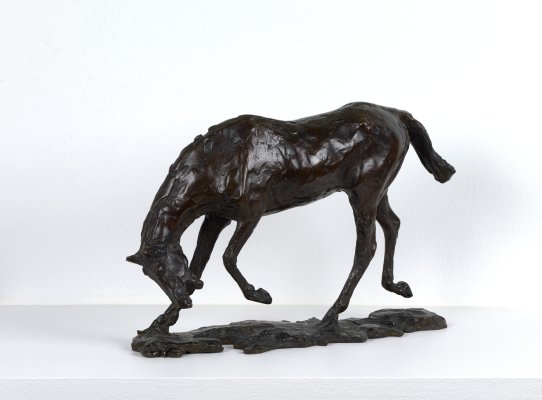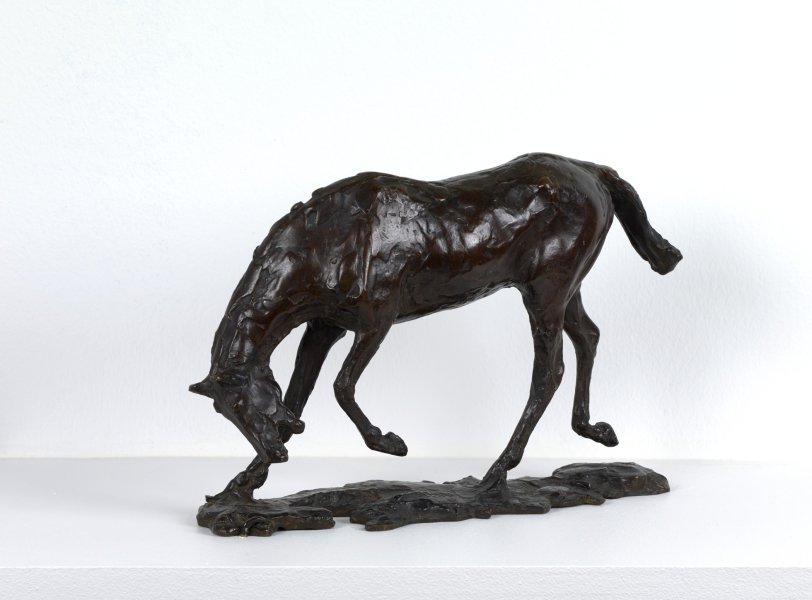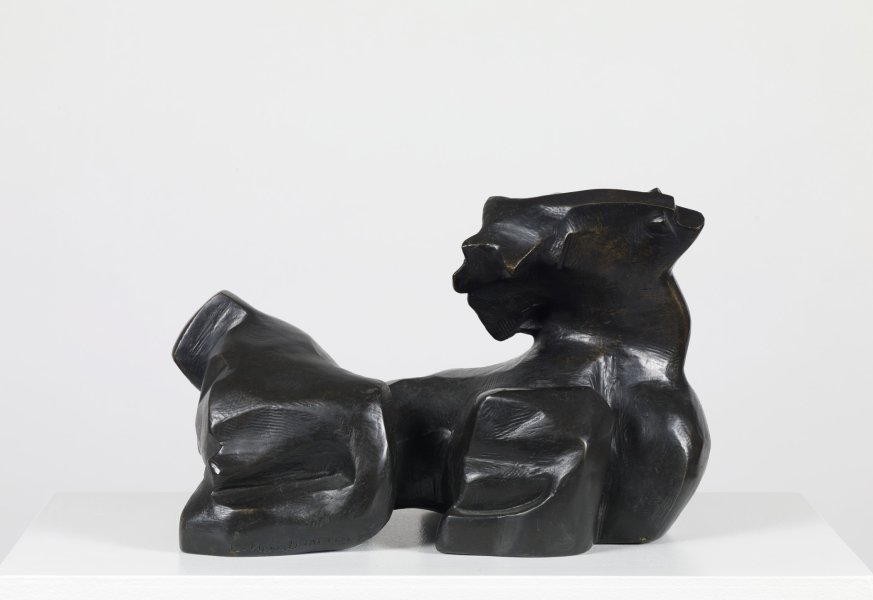Contrasting Styles

Edgar Degas (French, 1834–1917). Horse with Head Lowered, ca. 1885 (cast executed 1919–21). Bronze, edition 22/K; 7 5/8 x 10 3/4 x 3 1/8 inches (19.4 x 27.3 x 7.9 cm). Collection Albright-Knox Art Gallery, Buffalo, New York; Bequest of A. Conger Goodyear, 1966 (1966:9.23).

